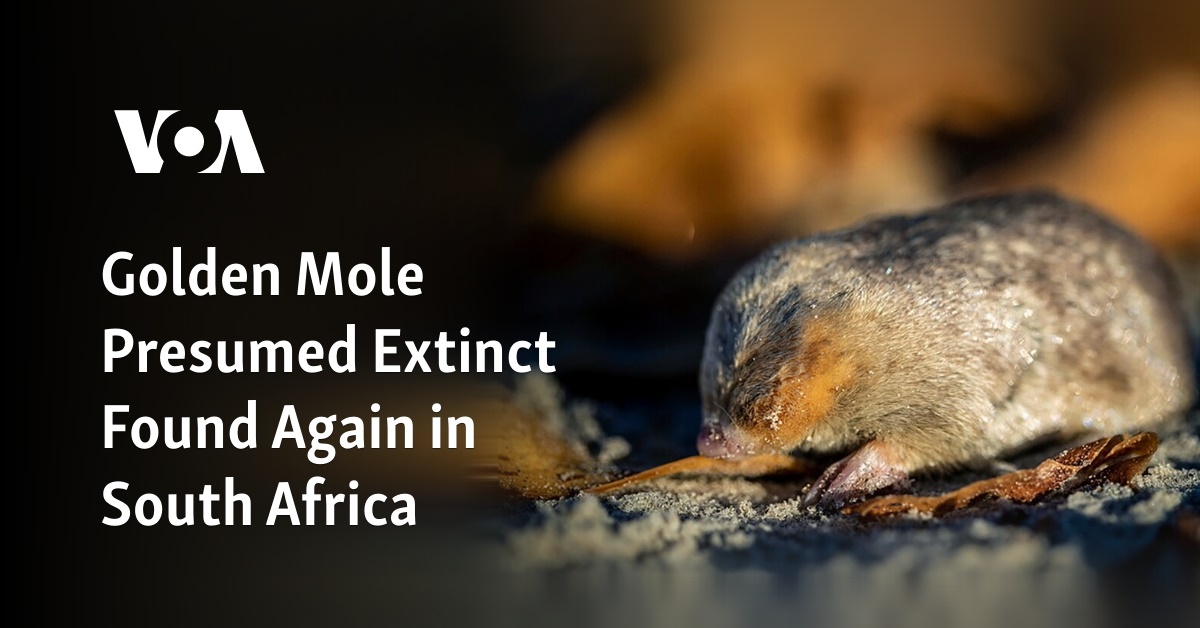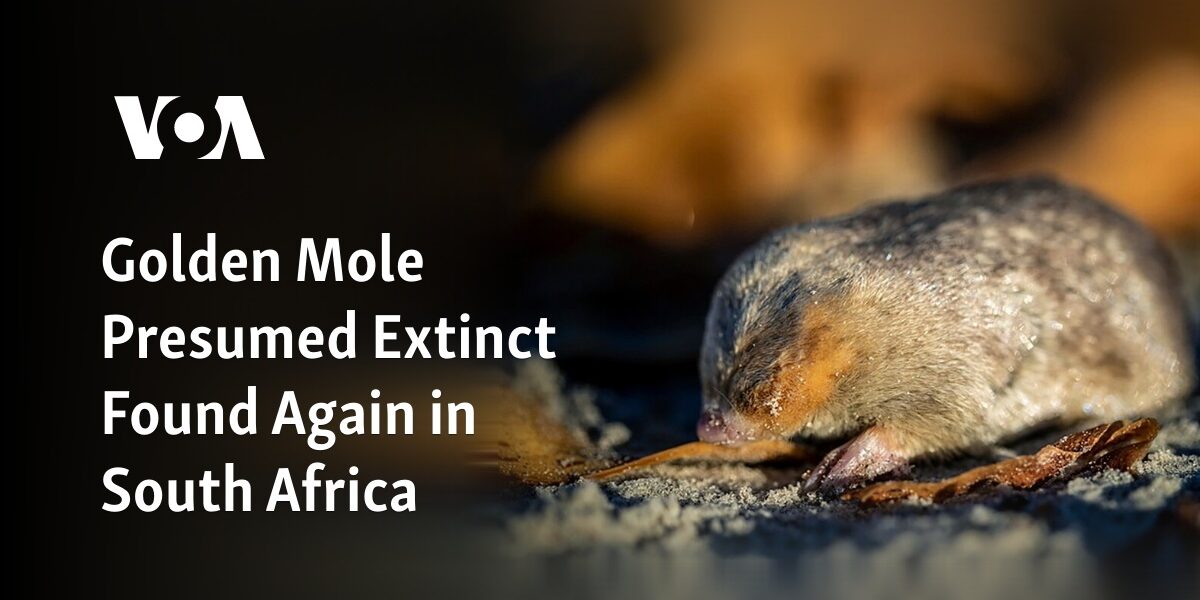The previously thought-to-be extinct Golden Mole has been rediscovered in South Africa.

Scientists in South Africa have reported finding a type of mole with a shimmering golden fur and the remarkable ability to move through sand dunes as if swimming. This species had not been sighted for over 80 years and was previously believed to be extinct.
A team of researchers from the Endangered Wildlife Trust and the University of Pretoria discovered a De Winton’s golden mole, a tiny, sightless animal with exceptional hearing abilities, alive on a beach in Port Nolloth on the western coast of South Africa. The mole subsists on insects.
The researchers stated that it had not been known to science since 1936.
Using a sniffer dog, the team was able to locate evidence of tunnels and came across a golden mole in 2021. However, due to the fact that there are 21 different species of golden moles and some have a close resemblance, the team required additional evidence to confirm that it was a De Winton’s.
The researchers collected environmental DNA samples from animals, which are left behind in skin cells, hair, and bodily excretions. However, they had to wait until 2022 for a De Winton’s DNA sample from many years ago to be provided by a South African museum for comparison. The DNA sequences were found to be identical.
Last week, the team’s research and findings underwent peer review and were published.
Samantha Mynhardt, one of the researchers, stated to The Associated Press that although they had optimistic expectations, their hopes were ultimately dashed by a small group of individuals. One expert from De Winton informed them, “You will not be able to locate that mole as it is now extinct.”
According to the researchers, it took three years from their initial trip to the western coast of South Africa to begin the search for the mole. This particular species is known to rarely leave traces of its tunnels and is capable of “swimming” beneath the sand dunes. Golden moles are typically found in sub-Saharan Africa, and the De Winton’s species has only been discovered in the Port Nolloth region.
According to Mynhardt, two De Winton’s golden moles have been identified and captured on camera in Port Nolloth. Additionally, the research team has discovered indications of other groups in the region since 2021.
Esther Matthew, a senior field officer at the Endangered Wildlife Trust, described the project as thrilling and full of obstacles. She expressed gratitude for the exceptional team, who brought enthusiasm and creative solutions to the task of surveying up to 18 kilometers of dune habitat in a single day.
The De Winton’s golden mole was listed as a “critically endangered species” by the conservation group Re:wild.
Several other species on the list have also been rediscovered, such as a salamander that was recently discovered in Guatemala in 2017, 42 years after it was last seen. In addition, a Somali sengi, a type of elephant shrew, was spotted in Djibouti in 2019, marking its first recorded sighting since 1968.
Source: voanews.com




